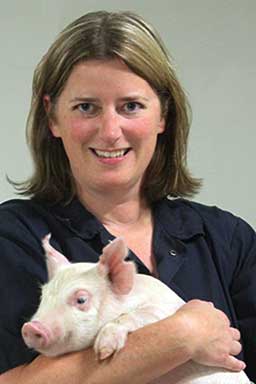In my previous editorial in the November-December issue of the Journal of Swine Health and Production (JSHAP), I discussed important issues surrounding citations and plagiarism.1 In this issue, I would like to discuss another complicated yet critical subject that influences the integrity of peer-reviewed literature, and that is conflict of interest (COI). Just like other ethical issues surrounding the publication of peer-reviewed literature, the topic of COI is worthy of many pages of discussion, but I will do my best to cover some important issues on one page.
I wanted to start with a definition of COI, and that proved to be more difficult than I anticipated. However, I did find one simple definition that I felt applied to scientific reporting and the peer-review process: “A conflict of interest (COI) is a situation in which financial or other personal considerations have the potential to compromise or bias professional judgment (eg, scientific reporting or review) and objectivity.”2 Why, as a reader of peer-reviewed literature, should you care about conflicts of interest (COIs)? Why are conflicts ethically significant? In my opinion, the answer is trust. A relationship of trust is essential between colleagues, governments, academic institutions, funding agencies, and of course, the general public. Being objective during the reporting and review and publication process of scientific research is critical to maintaining this trust. Objectivity improves transparency of reporting, increases confidence in the research that is conveyed, and subsequently protects the integrity of scientific scholarship.
JSHAP takes many steps to minimize potential COIs during the review and publication process. I will briefly outline some of our expectations and guidelines.
Responsibilities of authors. In the interest of transparency, all listed authors of submitted manuscripts are expected to declare any COI. It isn’t necessarily inherently wrong to have a COI; however, the authors must declare any potential for a COI as early in the review process as possible, ideally upon submission of the manuscript. It is important to declare any COI as it may guide editorial decisions, such as publication of such COIs. An example of a COI may include financial or other interest of the author or the author’s institution in the work being presented. Author declaration of possible COI allows the reviewers, and ultimately the readers once the work is published, to decide for themselves the impact of the COI on the paper’s conclusions.
Responsibilities of lead reviewers and reviewers. All reviewers involved in the peer-review process are expected to disclose all relationships that could be viewed as potential COIs. When a manuscript is submitted to JSHAP, a lead reviewer is chosen from the editorial board to review the paper. In addition to the lead reviewer, two or three other reviewers are solicited on the basis of their expertise. Reviewers from the same institution as the authors of the manuscript are not asked to review the paper. This helps to reduce any potential COI due to close professional relationships. Additionally, the reviewers are asked to declare if they feel they have any COI in reviewing the work, and if so, to remove themselves from the process. If a potential COI is identified, then a different reviewer is sought out. Another example of a COI for reviewers is a close working relationship with the submitting author(s). Multiple reviews are obtained in order to get a comprehensive review, but also to dilute any miniscule COI that may unexpectedly be present, or develop, during the review process.
Responsibilities of the executive editor and journal staff. As the executive editor, I will recuse myself from the review process if I feel I have any personal, professional, or financial COI with any manuscript, just as I would expect a reviewer to do. I will request a member of the editorial board to act as the managing editor of a submission in the event that I feel I have a COI. The JSHAP did not pioneer these strategies, but they are accepted and practiced strategies among scientific peer-reviewed journals.
These multiple steps are taken during the review process to avoid or minimize any potential or true COI and to maintain the integrity of scientific veterinary reporting. If you are interested in reading more about COIs and how you can avoid them in your own work, including clinical practice, there is a wealth of literature on the subject. As I mentioned earlier, this is not meant to be an exhaustive discussion of COIs, but rather dialogue to stimulate some thought on the topic. If any author, reviewer, or reader has questions or concerns about a potential COI, please do not hesitate to contact the JSHAP office.
References
1. O’Sullivan T. From the Executive Editor. Cite-seeing. J Swine Health Prod. 2012;20:269.
2. Desai S, Shortell C. Conflicts of interest for medical publishers and editors: Protecting the integrity of scientific scholarship. J Vasc Surg. 2011;54:59S-63S.
Terri O’Sullivan, DVM, PhD
Executive Editor

